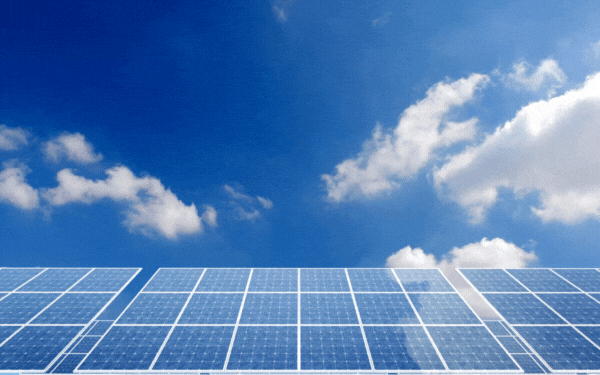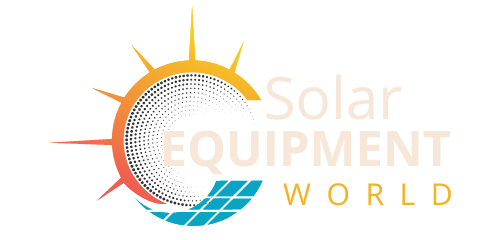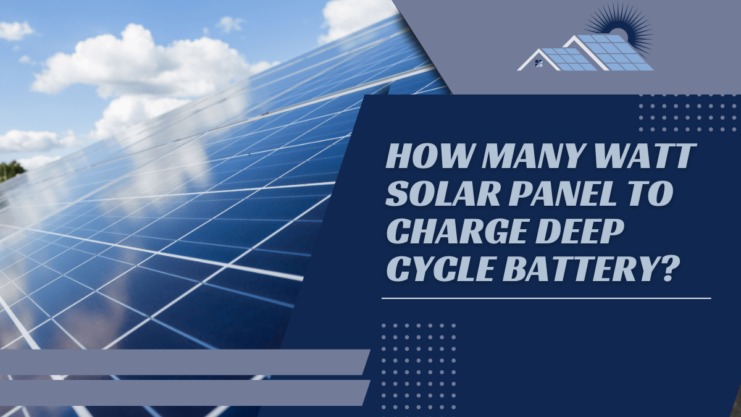For many people, it is convenient to go off-grid. Whatever your reasons for off-grid living, solar will come in handy for your energy needs. It is a self-sufficient lifestyle that will not have you relying on public utilities. You can use what Mother Nature provides for us in an eco-friendly way that does not deplete the environment while supporting all the comforts of your home.
How Many Watt Solar Panels to Charge Deep Cycle Battery
What Is A Deep Cycle Battery?
A deep cycle battery is a lead-acid battery that is made to be regularly deeply discharged for most of its capacity. It can discharge between 45% and 75% of its capacity depending on several factors including the manufacturer and its construction.
The best lifespan will help you keep the average cycle at 45% discharge. They are regularly used in off-grid situations. The deep cycle batteries can also be used in RVs, cars, and boats as they are constructed to be discharged and recharged thousands of times. They are rated in Amp Hours which is abbreviated as ah – typically 20 to 100 hours.
How to Calculate Solar Power Requirements?
To know how to charge your battery using solar, you must know how to calculate your solar power requirements. There are three factors to consider for an accurate result.
1. The Amount Of Energy Your Battery Can Store
The battery has a maximum energy storage capacity that you should consider if you need a reliable and adequate power system. You should strive to store more energy as this way your system is dependable and efficient.
Your battery capacity is measured in amp-hours and that has to be converted into watt-hours. You can do this by multiplying the voltage with the amp hours on your battery. Use this formula to do so:
Power in watt-hours = Battery capacity (ah) x Voltage of battery
Example 1:
If you have a 12-volt battery with a capacity of 20 amp hours then the power in watt-hours is voltage X ah
Power = 12 X 20
Power = 240
Example 2:
A 350ah battery can supply 35 continuous amps for 10 hours of 17.5 amps for over 20 hours.
Some appliances or devices have the amount clearly stated so you will not need to convert to know how much energy they can store. Keep in mind that this information is necessary for finding out what you need from your solar panel.
2. Energy Consumption Of Appliances Over Time
To calculate your power requirements, you need to ensure that your solar panel can handle your home’s electrical grid. Consider how much power your appliances use over time. This will help you to get a rough idea of how much power your system needs to run your home all the time.
Power is measured in watts so to get the value of power consumption for a period of time (usually measured in WH), calculated using the formula below:
Power Consumption Over Time (WH) = Power (Watts) x Hours of Use (Hr)
Example:
If a device uses 20 watts for 5 hours then the wh is hr X watts
WH = 5 x 20
WH= 100 WH
3. How Much Energy Does Your Solar Panel Generates?

Ultimately, you will need to consider how much your solar panels generate over time to see how much energy you harvest. A solar panel’s rating is also calculated in watts. To get how much energy your solar panel delivers to your battery, you will need to multiply the power generation rating on the panel by the number of hours it is exposed to the sun.
Here is the formula to use:
Energy Generated Over Time = Solar Panel Power Rating (Watts) x Exposure Time (Hr)
Example:
If your panel has a 10-watt rating and you expose it to the sun for 10 hours then the energy generated over time is the watt rating x time exposed
Energy generated over time = 10 X 10
100 WH is the energy delivered by the solar panel to power your deep cycle battery.
By considering these major aspects before installing a solar panel system, you will have a good idea of what to have for a reliable system. An off-grid system will help you get all the power you need to run your home on a daily basis. For high efficiency and reliability, ensure you have worked on all the possible factors before setting up your solar panel.
Watch this video to learn more about how to calculate your solar panel requirements.
What Solar Panel Should You Use?

The main thing to note about solar energy is that it is all about numbers. The power you require versus the power the board can put out. Before you can even begin acquiring a panel, you have to know what number of amp-hours or watts you’ll have to create in a set timeframe. This figure could be estimated in hours or days.
Since there are 24 hours in multi-day, we propose you utilize that as a benchmark. In the first place, decide your aggregate electrical utilization in that day and age. At that point figure the measure of direct daylight, the solar panel will get in that day and age and think of an aggregate sum of watt-hours required.
Normally we see a normal of 4 long stretches of usable daylight in the winter and 6 long periods of usable daylight in summer. There are exceptions with these estimates and they help adjust for factors like shade, mists, panel angle, and so on. When you have a decent handle on your capacity prerequisites, I propose you go to this solar calculator.
You should use good solar chargers to get the best service. You want reliability and efficiency for your batteries and anything less than excellent may leave you with power shortages. This is a list of recommendable solar chargers.
Bottom Line
Harvesting and storing solar energy in your deep-cycle batteries is easy. You will only need a few devices and you can have safe and clean power to power your home. In this article, we have covered what you need to know about charging a deep-cycle battery with a solar panel.
The system is efficient and reliable. You can install it anywhere in your home for great service. Do you have any questions about the process? Feel free to reach us by commenting on this post and we’ll gladly clarify any issue.
If this information was helpful, write to us in the comments section too. We’d love to hear from you. Also, forward the link to your friends, family or anyone you know who’d like to learn more about charging batteries using solar.

